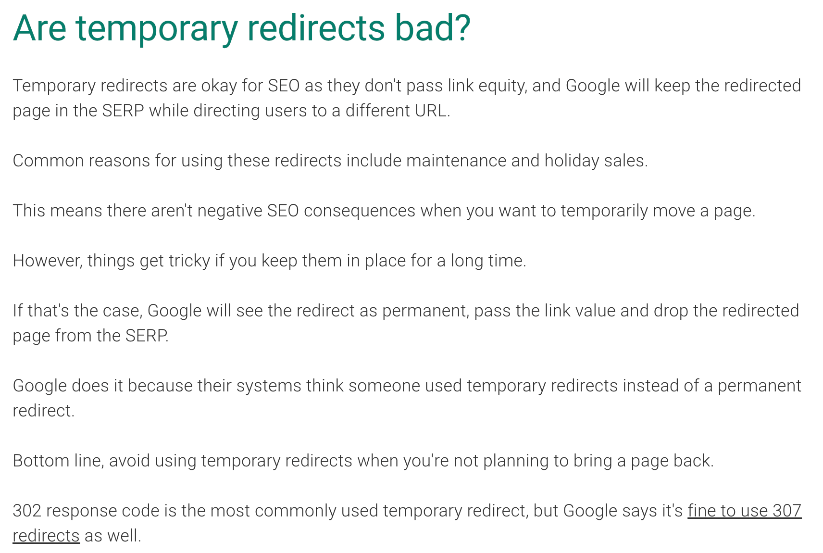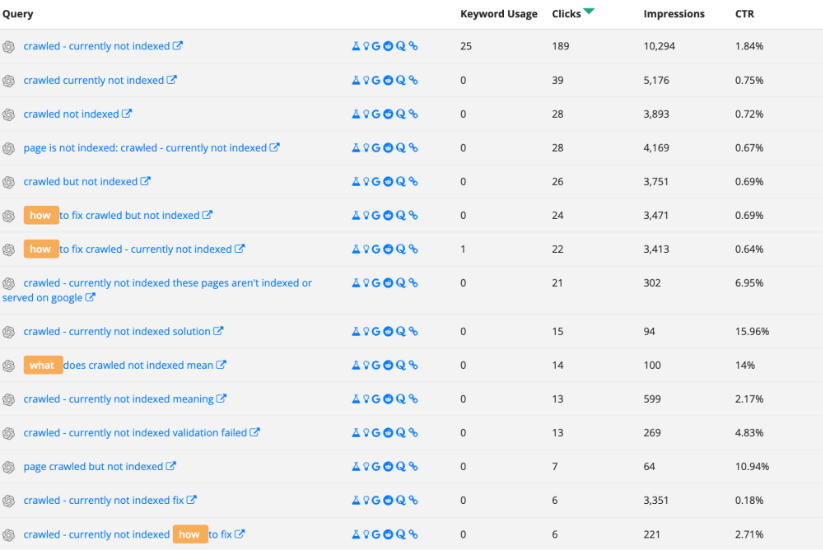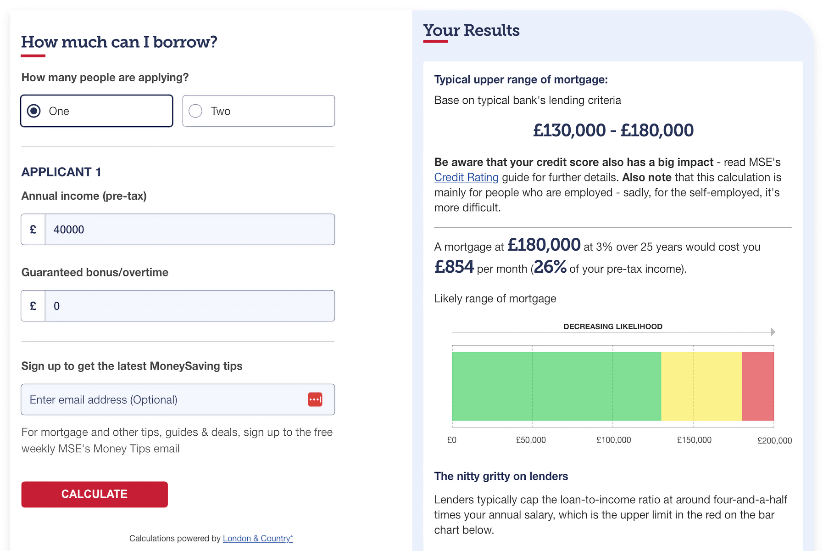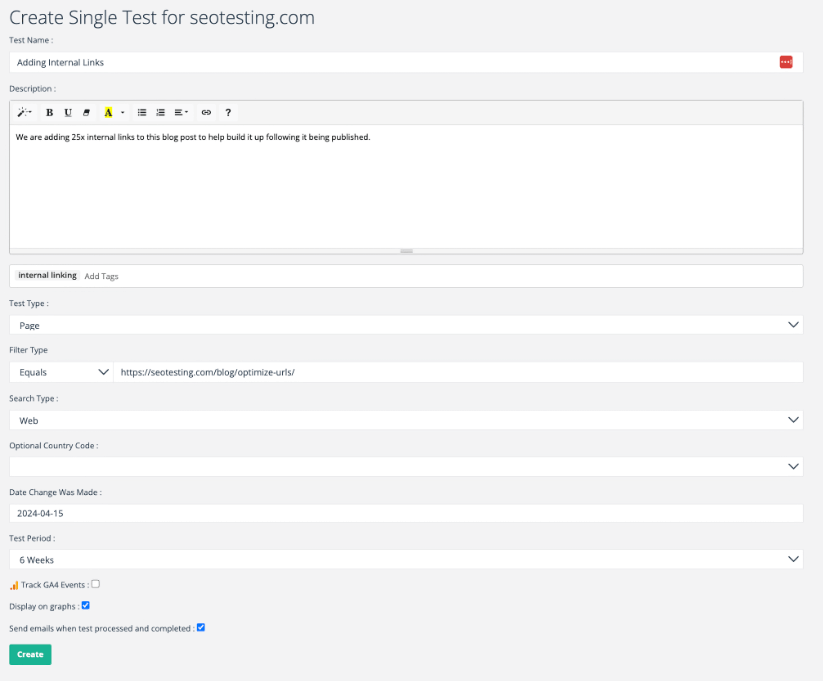When thinking about SEO, we tend to think of the same types of activities to increase organic traffic. We write content, publish it, and build links to it, and then occasionally, we will go back to that content and ‘optimize’ it again to boost it.
What if I told you that this isn’t the only way?
In this article, we’ll discuss 11 content experiments you can run on content you have already published to increase organic traffic to that content. We’ll also discuss the different SEO test types you can use to decide whether these experiments have yielded positive or negative results.
Regular content experiments being run and implementing learnings from these experiments can lead to results like this when done right:

So, let’s jump right into it.
What is a Content Experiment?
A content experiment is a change you make to your your website’s content in order to see some kind of change.
Some businesses run content experiments to increase organic traffic, and that’s the type of content experiment we will focus on for this article. However, other companies may want to run content experiments to improve the number of leads coming to a business through that content or the conversion rates on certain types of pages.
Whatever the end goal of your content experiments, the definition remains the same. You change your content and then run a test on that change to see what happens, noting down the results to learn.
11 Content Experiment Ideas to Run
In this next section, we will give you 11 ideas you can take away and run on your content to improve your content experiment skills.
Some changes are minimal and may only have a small impact, while other modifications are more extensive and could yield more significant increases in organic traffic.
Experiment 1: Adding Expert Commentary
If you have articles on your website written by your team that do not currently feature expert commentary from industry experts, adding this can be an excellent content experiment to run.

Adding expert commentary can be a great way to increase your article’s authority, which will improve it when Google (and other search engine bots) view it from an E-E-A-T perspective.
That’s before we mention the aspects of adding expert commentary that can improve your article performance without considering SEO. When an expert is featured in your article, they are likely to share this with their following on social media, increasing traffic to your article from sources outside of organic traffic. Experts can also choose, if they wish, to feature your article on their website (with a backlink), which can then also help your article from an Off-page SEO perspective. The more experts you feature without going overboard, the more likely your content will get backlinks organically. And, of course, this type of link-building is perfectly acceptable within Google’s guidelines.
The process of doing this is relatively simple. You can use social media sites like LinkedIn or Twitter (X) to look for expert commenters willing to contribute to your article. You can also visit popular journalist response sites like Connectively (formerly known as HARO), Help a B2B Writer, and Response Source.
Experiment 2: Re-Writing / Improving Meta Titles and Descriptions
Choosing to rewrite and improve your meta titles and descriptions is one of the more straightforward content experiments you can run. Doing this can significantly improve your article’s performance from a traffic perspective, as it can increase the click-through rate of your content. When measuring these results via a proper SEO test, you can see exactly what impact your content experiment has had on your CTR within the SERPs.
Improving the meta titles and descriptions on your articles can have a positive impact on your:
- Click-through rate
- Existing keyword rankings
- New keywords ranking for
All of which can have a terrific impact on the traffic your article gets.
Experiment 3: Re-Formatting Your Content
Re-formatting your content is another experiment you can run on your website to improve the traffic it gets, whether from organic search or other sources.
Each piece of content you publish will have a ‘target keyword’. Search this keyword and look at the content ranking ahead of you. Are these pieces formatted differently from your content? Re-formatting your content to match the format of these top-ranking articles can be a great way to match search intent better and increase organic traffic.
Let’s say, for instance, that you notice the top-ranking content is formatted as a listicle. In contrast, you have formatted your content as a long-form blog post with multiple talking points and a word count far higher than the content you are competing against. In certain situations, removing some wording from your article and re-formatting it as a listicle could significantly impact your content’s traffic.
You can switch this around, also. If you have published a listicle-based article and you start to rank well, but you are struggling to really move up to the top of the SERPs whilst competing against other listicle content, then you may want to try an alternative content in order to give the reader a fresh perspective on the subject.
Experiment 4: Embedding Videos
Choosing to embed videos from YouTube and/or Vimeo into your content is a great experiment to run to check if this has a positive impact on your content’s traffic.
While embedding videos tends not to impact your content’s SEO standing, you can experience positive changes in your article’s engagement rate, time on page, and click-through rates to other areas of your site. Since we know that, at least to some extent, Google uses click data within its algorithms, this can potentially increase your organic traffic.

The above screenshot shows the click increase we saw on one of our blog posts following the embedding of a YouTube video from the SEOTesting YouTube channel. No other changes were made to the content. Throughout the 4-week SEO test, our blog post saw an increase in clicks per day of 127.27%.

Experiment 5: Improving the Content’s URL
Improving your article’s URL is another change you can make to increase traffic from organic sources.
Often, when you optimize your URL, add your article’s target keyword, remove useless parameters, and shorten the URL, you can see a positive change in your article’s traffic alongside this change. And a content experiment, followed by a URL switch test, can help you see this.
Other benefits to doing this do not factor in organic traffic increases. Shorter URLs that clarify what the article is about are infinitely more shareable on social media sites, which can also increase the traffic you get via these sources.
Remember, any time you change a URL for a piece of content, you must redirect the old URL to the new URL using a 301 redirect.
Experiment 6: Improving Internal Linking
As we all know, adding relevant contextual internal links to your content can significantly improve the organic traffic you get to your content. Google sees links, even internal links, as signals of authority, so adding more internal links (again, providing they are relevant) can help Google and other search engines see your content as authoritative.
If you have a published article with little to no internal links pointing to it, adding internal links to this content is a great test. You can then run an SEO test on this page over 6 to 8 weeks to see if these changes positively impact organic traffic.

The above screenshot shows our click graph following an internal link content experiment. We added internal links from a well-performing article to other related pieces and saw a good increase in organic traffic. The full results for this particular test are as follows:
- A 32% increase in clicks per day.
- The average position of our page went from 47 to 43.
- The page click-through rate increased from 0.26% to 0.34%.
Experiment 7: Improving Page Structure
If your page’s structure is ‘off’ in any way, its potential for organic traffic will be limited. Improving the structure of your page is an excellent content experiment to run.
Improving the structure of your page could be as simple as ensuring it has a proper header and footer and a good internal link structure, or it could mean making more extensive changes to your site.
As mentioned earlier, we know (following the anti-trust lawsuits that Google has been fighting for several years) that Google uses click data to allow their ranking algorithms to function. So improving the structure of your page could lead to improvements in these types of metrics which will enable your content to perform better in the SERPs.
However, you would need to run an SEO test to find this out properly and ensure the test results are statistically significant.
Experiment 8: Adding an FAQ Section
This is a content experiment that you can run very quickly, primarily if you have written long-form content that currently does not have an FAQ section.

Adding an FAQ section allows you to rank for even more keywords as you add them to the page’s body, which lets you expand the content to related topics and adds further authority to the article.
You can use tools like Ahrefs and Semrush to find questions related to your target keyword, which you can then answer within your new FAQ section to increase traffic. An SEO test allows you to track your current keyword rankings, the new keywords you start ranking for, the click-through rate of your content, and more.
It’s also worth noting that SEOTesting will show you question-based queries that your page is already ranking for via a URLs ‘Page Details’ screen within the tool:

SEOTesting then highlights question-based search intent keywords to help highlight them. You can add some of these questions into your FAQ sections to help improve organic traffic. Your page is already ranking for these keywords, and in some cases is generating clicks, so it makes sense that these should be the first questions added to your new FAQ section.

It’s also possible to use free keyword research tools like AlsoAsked to find questions related to your keywords.
Experiment 9: Add Content to ‘Improve’ E-E-A-T
While it is important to note that you cannot directly ‘improve’ E-E-A-T, as it is not a metric you can track and improve, you can add content to your pages to better improve the signals that Google and other search engines look for when establishing how well your website performs from an E-E-A-T perspective.
You can add text to your content that shows your experience in your subject matter, as we have done in this article. You can also add text to show your expertise, whether this is directly (through author bios) or indirectly (through expert commentary, as we discussed earlier).
You can make other changes, such as linking to authoritative web sources when talking about important topics or adding content from other web users (reviews are great for this) to show trust in your content.
Experiment 10: Create a Table of Contents
When you have long-form content on your website, adding a table of contents can be an excellent experiment to run, primarily to increase engagement metrics, which Google might use to boost your article’s rankings and traffic.
When users have a table of contents to engage with, they know more about what will be included, which will help them decide to stay on the page.
It will also increase the chance that they directly engage with your content by clicking a link, which will signal to Google that your page is, in some instances, more valuable than other pages within the SERPs if they do not have a table of contents to engage with.
Experiment 11: Adding Interactive Elements to your Page
If you have a piece of long-form content on your website, you may want to experiment with adding an interactive element to your page in order to give it that boost it needs.
Adding interactive elements, when done well, can have great impacts on:
- The time users are spending on your page.
- The overall engagement rate of your content.
- Clicks on your page.
- The number of pages visited across your website.
All of which can lead to better organic traffic thanks to the improvement in these on-page metrics, and that’s before mentioning the benefits to your article on other mediums like social media and referral traffic!
Some of my favorite examples are mortgage calculators from lenders. Reading about mortgages, how much you can afford, how much you’d need to pay per month, all of it can be exhausting. And trying to work it out in your head or with a notepad is not productive. Hence, most lenders nowadays have an interactive calculator on their sites so you can see this information speedily.

SEO Test Types for Content Experiments
Following the implementation of your content experiments, you can run several different SEO tests to measure the impact of these changes. This section will discuss these test types and what content experiments they can be used for.
Single-Page SEO Testing
Single-page SEO testing is great for testing any change that has occurred on one page of your website. This includes changes such as:
- Adding expert commentary
- Re-writing and improving meta information
- Re-formatting your content
- Embedding videos from YouTube or other sources
- Adding internal links
- Improving page structure
- Adding FAQ sections or table of contents
A single-page SEO test is excellent for changing just one website page. This will then note how your page was performing prior to the change and monitor the page for the same amount of time post-change to give you a result on what’s happened to it.

Group SEO Testing
Group SEO testing works precisely the same way as single-page SEO testing but is excellent when simultaneously testing changes to multiple pages.
Let’s say, for example, that you have a group of long-form blog posts on your website and want to add a table of contents to each. This is the kind of content experiment where a group SEO test would be useful.
The test runs precisely the same as a single-page SEO test, but this time, it monitors the statistics for all the pages you have added to the group. You can also drill down to look at the test results on a page-by-page basis.
URL Switch Testing
URL switch testing is excellent for any content experiment involving URL changes on your website. If you have changed the URL of a piece of content to make it shorter, include a keyword, or remove unnecessary parameters, you need to implement a URL switch test to track whether this URL change has had a positive or negative impact on traffic.
Once a 301 redirect has been implemented, you can set up the URL switch test within SEOTesting. This allows it to gather data to determine whether your test is working.

Wrapping Things Up
The potential to boost your website’s organic traffic through content experiments is immense.
This article has outlined 11 powerful strategies that can increase your website’s traffic, increase user engagement, and improve overall content quality.
By implementing these experiments—from enriching articles with expert commentary to optimizing meta titles and URLs—you’re not just tweaking content but transforming it into a dynamic tool that actively engages and retains your audience.
Remember, the key to success lies in meticulous planning, executing these experiments, and rigorously testing their impact using various SEO test types.
Armed with these insights, you are well-prepared to refine your content strategy, adapt to evolving SEO trends, and drive significant traffic to your site. So, apply these ideas creatively to your content and watch your traffic metrics soar.
If you are looking for an SEO testing solution to track the results of your content experiments, look no further than SEOTesting. We have a range of test types, including:
- Single-Page SEO Tests
- Group Tests
- URL Switch Tests
- Split Tests
Which will allow you to track what happens following a content experiment you perform. We have a 14-day free trial, with no credit card required, so sign up today and get testing.

